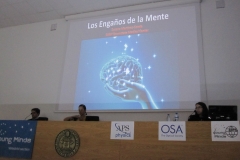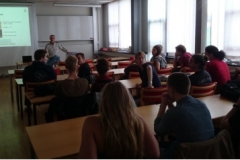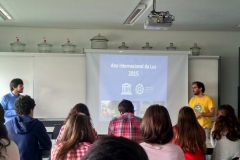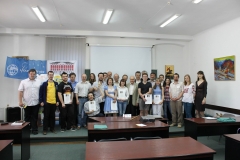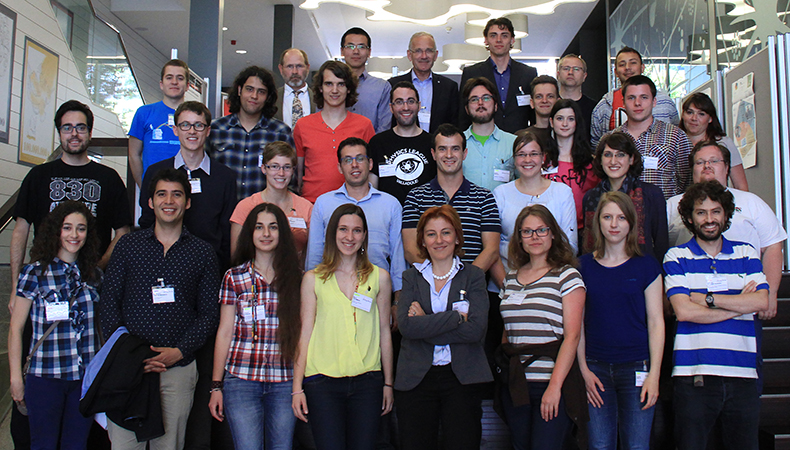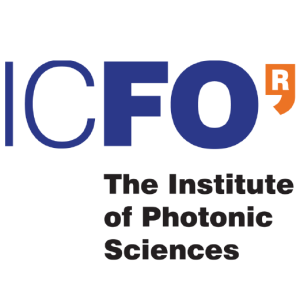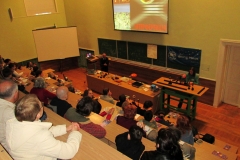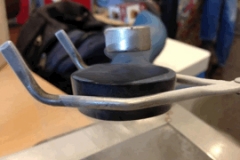 When the package arrived from Germany, we immediately knew what was inside. We eagerly, but carefully, opened the package to find inside what we had been hoping for. A coated YBCO superconductor, larger than any we had previously used. Naturally, the first thing we did was to fill a container with liquid nitrogen to test it. Once the superconductor was cooled to cryogenic temperatures, we were not disappointed. The magnet floating above it was more stable and could be mounted on a greater distance from the superconductor compared to previously used superconductors. Furthermore, the superconductor itself is shielded from the heat of the air around it, allowing it to be lifted out of the liquid nitrogen for a longer period of time.
When the package arrived from Germany, we immediately knew what was inside. We eagerly, but carefully, opened the package to find inside what we had been hoping for. A coated YBCO superconductor, larger than any we had previously used. Naturally, the first thing we did was to fill a container with liquid nitrogen to test it. Once the superconductor was cooled to cryogenic temperatures, we were not disappointed. The magnet floating above it was more stable and could be mounted on a greater distance from the superconductor compared to previously used superconductors. Furthermore, the superconductor itself is shielded from the heat of the air around it, allowing it to be lifted out of the liquid nitrogen for a longer period of time.
Since the superconductor arrived we have visited many high schools in the Netherlands. There we found that the advantages of this superconductor as described above helped us to fascinated the students even more. With this new superconductor, we can properly demonstrate the levitating magnet, even to the students in the back of the class!
Most of our experiments are based on
elementary science, which the students themselves can understand. Therefore, they don’t expect us to show them something that baffles most Physicists. With this experiment we try to explain to students that Physics is not finished yet, and that still a lot of research has to be done to fully understand the world around us. Using this new durable superconductor, we have already sparked enthusiasm in hundreds of students, and will continue to do so for many years to come.

